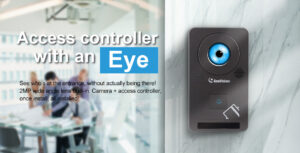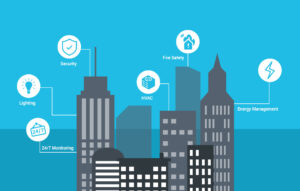
Access control has long performed its chief function – that is, letting those with access rights in and thus helping protect lives and assets. But more and more, access control is seen to be able to provide more value than just opening doors – its integration with other systems and the data it generates can offer real business intelligence and insights. Nowhere is this more manifested than in a smart building, where access control can make the building even smarter.
Energy savings are an area where a smart building can benefit from the access control system, which has the knowledge of how many people are physically present in a building. It can interoperate or integrate with the building management systems via OPC or BACNet protocols and set up rules dictating room temperature setting according to the number of people in the room or area.
An access control device is just a switch. When you connect the ‘switch’ to a door it then functions as a ‘door access controller.’ But you can also connect the ‘switch’ to a light or a thermostat. The switch can be programmed to recognize the user (by card or biometric credential) and then adjust the HVAC and lighting, accordingly. Combining timers and access control technology can yield significant energy savings when deployed properly.
The savings that this helps create can be significant. Using an access control system to pass through user information, such as a user’s card badge at a reader to a BMS system allows that system to accurately bill users for heating and lighting costs on a pay-per-use basis.
Another area in which access control can make a building smart is through increased operational efficiency. Whether it’s accessing your office building’s parking gate, turnstiles leading to the elevator banks, the office front door or even your computer, the faster a person can gain access to their ‘work,’ the more operationally efficient their organization becomes.
Going beyond the physical security realm, the access control system needs to pay for itself and add real measurable value to businesses. This can be achieved by either reducing operational costs or by doing more by enhancing operational efficiencies through the use of ‘intelligent smart applications’ at the door or the centralized command and control of integrated systems. It eliminates the requirement for a separate room booking solution from the access control system. Here users can easily create and edit meeting room bookings through their Microsoft Outlook exchange calendar or directly on the terminal at the door.

How data can help
More importantly, it’s the data generated by access control devices that can help operators gain further insights and make relevant adjustments accordingly. Area report can be generated to count people in a particular area of the building, and mustering report can be generated to access occupancy in areas that need to be evacuated. Based on the data collected – frequency of building services could be considered.
The data can also provide a reference for the design and construction of new buildings. Intelligent design allows individuals to understand what type of system is generating information. In this way, architects and engineers can focus on making the end user experience better based on the flow pattern, and what additional technologies can be embedded into the access control system that will offer a better experience, such as an egress light on a door or a lock embedded with speakers.
Source: a&s Magazine



































































